Porsche 911 (G-Series) – The Story
The Second Generation 911
Story / Timeline / Model Guides / Gallery / Videos / Details & Series / Misc Data / FAQs / News / Features
Generation: Second Generation
Manufacturer: Porsche AG
Production Years: 1974 - 1989
Model Years: 1974 - 1989
Designer: Ferdinand A Porsche, Erwin Komenda
Body Style: 2-door coupe, targa, convertible, speedster
Layout: Rear-engine, RWD
Engines: 2.7 L Flat 6 (various), 3.0 L Flat 6 (various), 3.2 L Flat 6 (various), 3.0 L Flat 6 (various), 3.0 L Turbo Flat 6, 3.0 L Turbo Flat 6
Transmission: 5-spd manual, 4-spd auto
Date of unveil: Official March 1996 (Geneva Show)
Premiere: September 12, 1973 IAA
Predecessor: Porsche 911 Classic (F-Body)
Successor: Porsche 911 (Type 964)
Buyers Guide (Coming Soon)
The Porsche 911 G model was a true perennial and was built for a full 17 years. During this time, engines were built with 2.7, 3.0 and 3.2 liters. The narrow G-model (from 1974 to 1977) over the 911 SC, the Carrera 3.0 to the Carrera 3.2 gave it a large variety of variants, colors and equipment. The G-Body saw the introduction of impact bumpers to conform with low speed protection requirements of U.S. law, these bumpers being so successfully integrated into the design that they remained unchanged for 15 years. In 1974 the engine size was increased to 2,687 cc, giving an increase in torque. The use of K-Jetronic CIS Bosch fuel injection in two of the three models in the line up - the 911 and 911S models, retaining the narrow rear wings of the old 2.4, now had a detuned version of the RS engine producing 150 and 175 bhp (110 and 129 kW) respectively.
Ten years after the car made its premiere, the Porsche engineers gave the 911 a comprehensive makeover. Known as the 'G-model', the new generation 911 was built from 1973 to 1989 – a longer period than any other. A particular feature of this evergreen was the striking bellows-style bumpers – an innovation created in order to comply with the latest US crash test requirements. Three-point safety belts fitted as standard and seats with integrated headrests also provided increased occupant safety. A further milestone in the car's history came in 1974, when Porsche brought out the first 911 Turbo with a three-litre engine, 260 hp and a striking rear spoiler. With its unique combination of luxury and performance the 'Turbo' became a synonym for the Porsche brand. In 1977 came the next performance level: the 911 Turbo 3.3 was given a charge air cooler and at 300 hp was the highest performance car of its class. On the naturally aspirated side the 911 Carrera re placed the SC in 1983 and, having an engine capacity of 3.2 litres and 231 hp, became a much loved collector's piece. Lovers of fresh air were able to buy this 911 as a convertible from 1982. In launching the 911 Carrera Speedster in 1989, Porsche was building on a legend.
Engineers searching for the "ideal charge" – optimum combustion of the air-fuel mixture – is almost as old as the combustion engine itself. The technicians aim to get as much air as possible into the cylinders so that, when it is compressed and mixed with fuel, it can create a high operating pressure and therefore high output by means of combustion. The 911 Turbo, presented in 1973, was a forward-looking study as its 3-litre turbo engine boasted charge pressure control on the exhaust side which had previously been thoroughly tested in the motor racing sector.
With the 911 Turbo, which was ready for series production in 1974, Porsche was the first car manufacturer to successfully adapt the turbocharger to the various driving states. Instead of the conventional intake-side control, the company developed exhaust-side charge pressure control. This prevented unwanted excess pressure during partial load or overrun by guiding excess exhaust gases via a bypass instead of through the exhaust gas turbine. When charge pressure was needed again during an acceleration phase, the bypass valve closed and the turbine could work to its full capacity in the exhaust stream.
In 1975, Porsche responded to the issue of corrosion with emphatic success. The 911 was the first series production car to be given a body which was galvanized on both sides – allowing Porsche to offer a six-year corrosion warranty which was extended to seven years for the 1981 model year and then later to as much as ten years. The treated body-in-white not only improved the service life but also vehicle safety as the process preserved the overall rigidity and the crash safety characteristics of the body, despite vehicle aging. It plays a part in the reputation of the 911 as being an extremely durable vehicle – two thirds of all the 911 cars ever built are still licensed for road use today.
Extensive tests were carried out before the body was launched for series production. This included trials with stainless steel as the body material – three shiny silver prototypes were made from this material, one of which can be seen today at the Deutsches Museum in Munich. However, the engineers decided not to use stainless steel but to galvanize the body-in-white as this was easier to produce. Driving the prototypes through a bath of salty water to test the resistance to corrosion is a legendary part of the test course in Weissach.
This graphic breaks out the second generation Porsche 911 in terms of timelines and how to tell all the models apart. Click on the image to see it in higher definition. We split the timeline into entry level, standard level and sports-focused cars. Note that these are known as the G-Series cars (not to be confused with the internal “G-Body” used for 1970–71). Introduced impact-absorbing bumpers to comply with U.S. crash regulations, giving the 911 a more modern, muscular look. The basic 911 shape remained, but nearly every component — from engines to interiors to electronics — was improved for performance, comfort, and reliability.
There were several basic special edition models throughout the second generation 911s lifecycle that were nothing more than design exercises, but there were also some really interesting models too. Following the famous 1973 F-model 911 Carrera RS 2.7, Porsche built its successor based on the G-model and it was called the 911 Carrera RS 3.0. With its new 3.0-liter engine, featuring mechanical fuel injection, it was capable of 230 hp and boy, was it rare, with only 56 made. Then there was the Option M491 which was called the 'Supersport' in the UK, and commonly referred to as the 'Turbo-look'. The M491 option closely resembled the Model 930 Turbo with it's exterior styling that included flared wheel arches and the classic rear spoiler. It also featured wider wheels, a stiffer suspension and the superior turbo braking system. From August 1987 to September 1989 Porsche produced the model 911 Carrera Club Sport, or 911 Carrera CS. A total of 340 of these cars were built and they were built specifically for club racing and included a blueprinted engine with hollow intake valves, a higher rev limit, spartan interiors and zero power options - in an effort to save weight, of course. There was also the Speedster, a 2 seater, low-roof version of the Cabriolet, reminiscent of the model 356 Speedster of the 50's.
The wonderful internet has given us much more access to videos of the second generation 911.
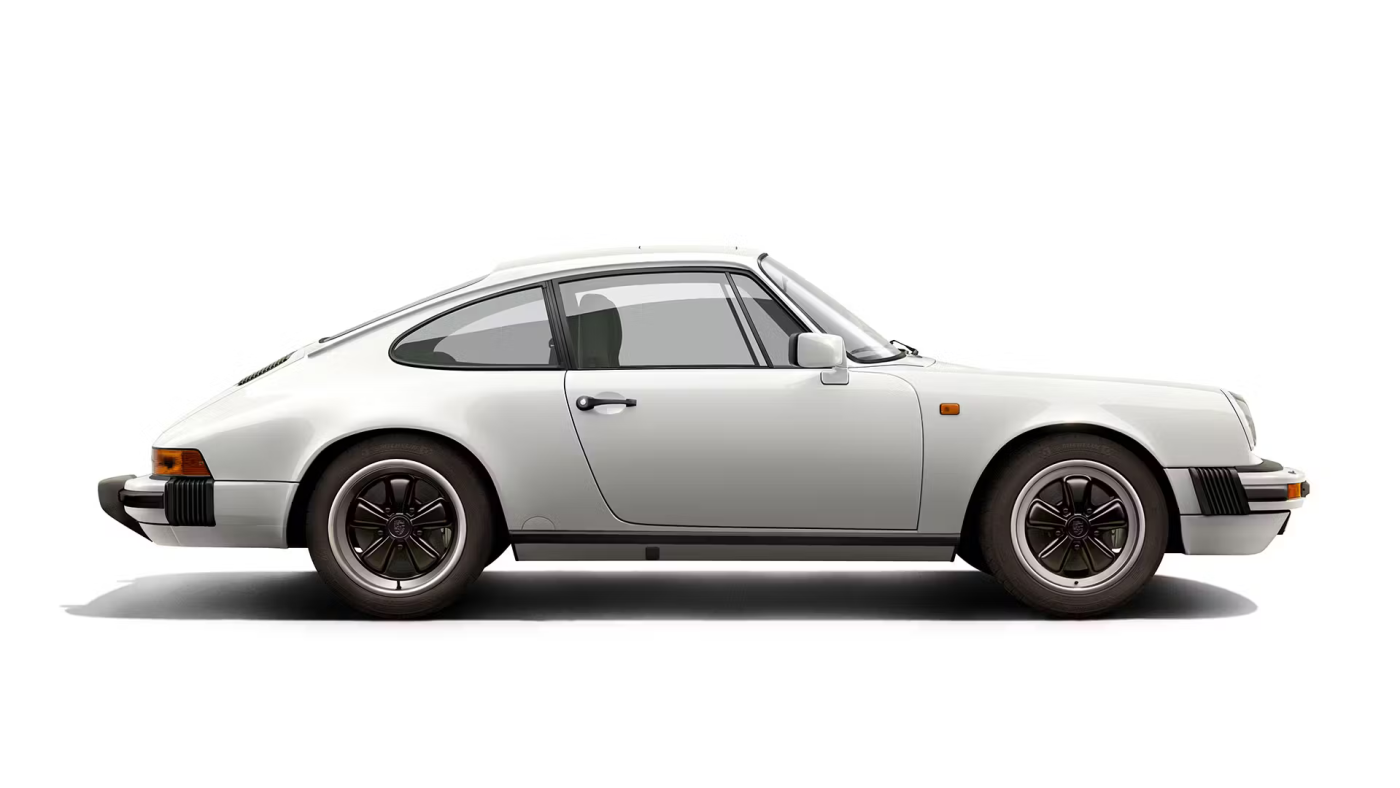
In the 911’s first nine years of production, nearly 83,000 were sold. Between 1964 and 1973, the first generation F-body 911 had been considerably improved. Over those years, engine size grew from 2.0 to 2.4-litres. By the early 1970s, complying with tightening US safety and emission legislation was becoming a problem for Porsche, which is why Porsche created the new G-body platform. The 1974 model year G-series derivative replaced the outgoing 1973 model year F-series.
The new 911 looked different to the outgoing generation and also included new engines and variants. The new impact-absorbing bumpers, a response to regulations meant that the 911s now has a colored bumper and a new front profile. The entry level 911 had 150 bhp, the 911 S got 175bhp and the top of the line Carrera got 210 bhp. All models were available as Coupe or Targa.
The body and suspension were little changed from the outgoing generation. The engine upgrades were pretty special and took a lot of learning from the 1973 RS and were available in three states of tune depending on the variant chosen.
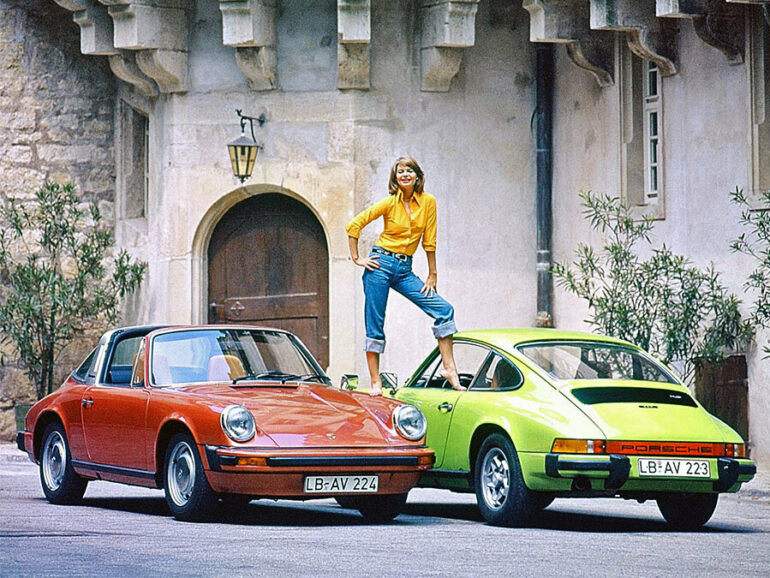

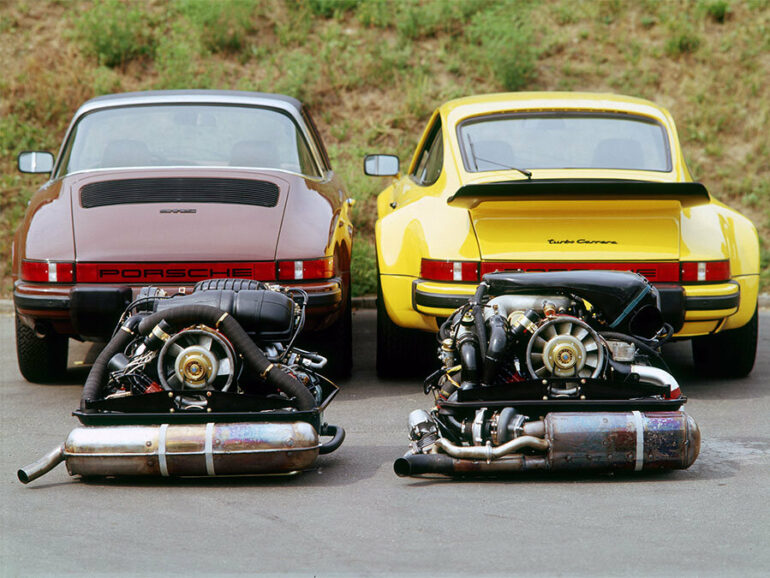
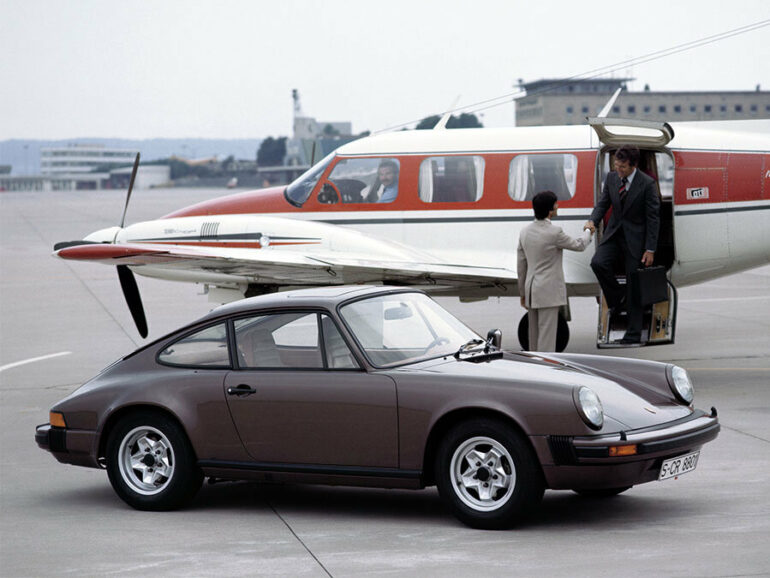
Porsche struggled to make all the 911s available in the US even though it got better at making its engines cleaner and more efficient. The top of the line Carrera couldn't be sold in the U.S and the lower models had to make do with lower power thanks to a power-stealing power-steering system. For the 1974 and 1975 model years, Porsche had offered the entry level 911, the mid-range 911 S and the flagship 911 Carrera. All came with 2.7-litre engines. Production of the 1976 model year meant the 911 model lineup was now only two versions (the 2.7-litre 911 Lux (known as the 911 S in the US) and the 911 3.0 liter 3.0 Carrera).
Improvements to the both the 2.7 and 3.0-litre lumps came in the form of a better cooling fan (five blades) and larger oil pump. The Bosch K-Jetronic fuel-injection with automatic cold start enrichment was also new.
The new 3.0 Carrera replaced the outgoing 2.7-litre Carrera as the top of the lineup (it too wasn't US compliant). The engine was essentially a normally aspirated version of the turbocharged 930 engine and made a respectable 200bhp and 188 ft lbs. A four speed gearbox was standard with a five-speed an option.
The big update when it came to the body was the new zinc coating starting in 1975 and cast front suspension cross-member (as used on the 930). Thicker torsion bars were fitted to the 3.0 Carrera as standard.
1978 saw a new 911 introduced, known as the Porsche 911 SC. Overall, it was meant to be more refined, more driveable, and more dependable, all with the aim of attracting new buyers to the brand. The SC, which stands for "Super Carrera" was destined to be the last of the model 911 line as the all new front-engine mounted V-8 Model 928 was waiting in the wings to take over as the flagship for the 1979 model year. The SC was built around the 1974 Carrera 3.0 Turbo engine except with no turbos and it was also the first Porsche truly designed for the worldwide audience.
The model 911SC offered American buyers an attractive 15 bhp bump over it's predecessor the model 911 S. Porsche sought to make the SC a 'world' car by fitting every model for every market with an exhaust emission air pump. The emissions regulator created a 20bhp loss for the Europeans when the SC replaced their 200bhp model Carrera 2.7. Porsche made compensation for the loss of power by advancing the timing of the camshafts by a mere six degrees, allowing it to pull surprisingly strong from low rpm.
Over its life, the SC got updates almost every year. Power was increased for the 1981 year model, now with 204 hp. In late 1981, a Cabriolet concept car was introduced at the Frankfurt Motor Show. This was the introduction of Porsche's first true convertible. The Cabriolet was made available to the public in late 1982 as a 1983 model and proved to be wildly popular despite a premium price tag, selling out more than a year in advance. There were basically 3 special editions of the model 911SC.
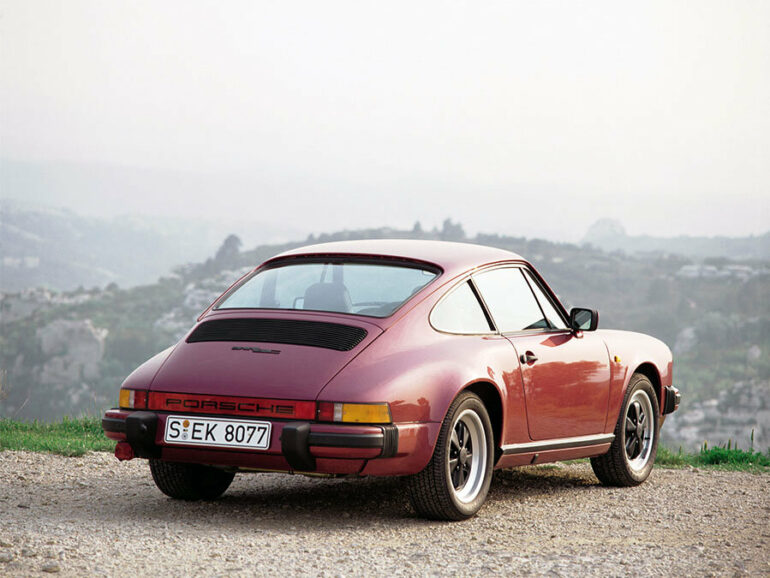
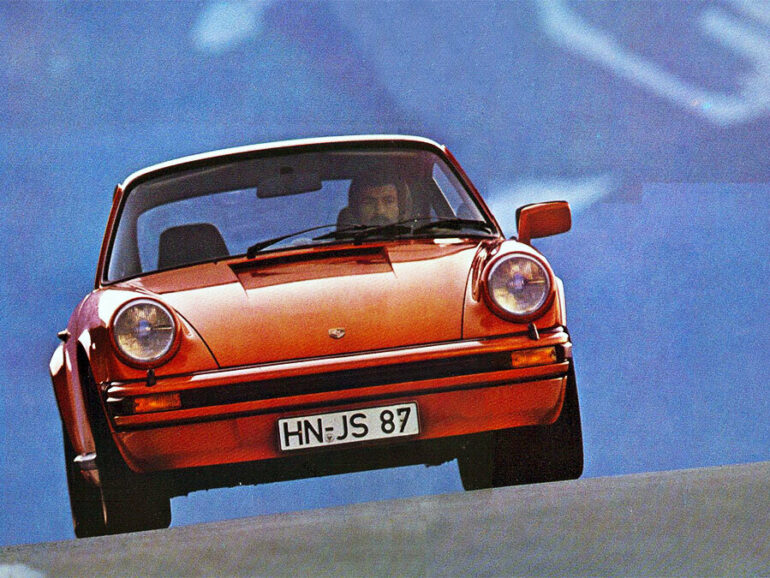


In 1984 Porsche introduced the replacement to the popular 911SC and it got the classic 'Carrera' designation which had not used since 1975. Welcome to the Porsche 911 Carrera. The Carreras were offered in all three 911 body styles: coupe, cabriolet and targa.
With a higher displacement and electronically controlled fuel and ignition, the 3.2 Carrera was both faster and more fuel efficient than the SC. The engine capacity was raised to 3164 cc by employing the 95 mm bore from the previous SC model along with the 74.4 mm stroke of the 1978 Turbo 3.3's crankshaft. Higher domed pistons beefed up the compression ratio to 10.3:1 for cars on the European market, and 9.5:1 in cars destined for the shores of the United States. The American versions were pushing and impressive 207 hp and the European market versions were pushing an even more impressive 231HP. The Carrera's 3.2-liter flat-six boasted nearly 80-percent new parts, although its overall design was the same as the 911SC's. The only transmission offered at launch was the Getrag 915 five-speed manual.
The Model 911 3.2 Carrera remained basically unchanged during it's 5 year production run with the exception of a new 5-speed gearbox, a hydraulically operated clutch and a thermostatically controlled fan to improve oil cooling, all implemented in 1987. There were some minor exterior modifications of fog lights, and a redesigned dash in 1986 that featured larger air conditioning vents. Porsche also produced 4 optional limited production versions, as well as a Speedster body style that would go on to become a favorite amongst fans.
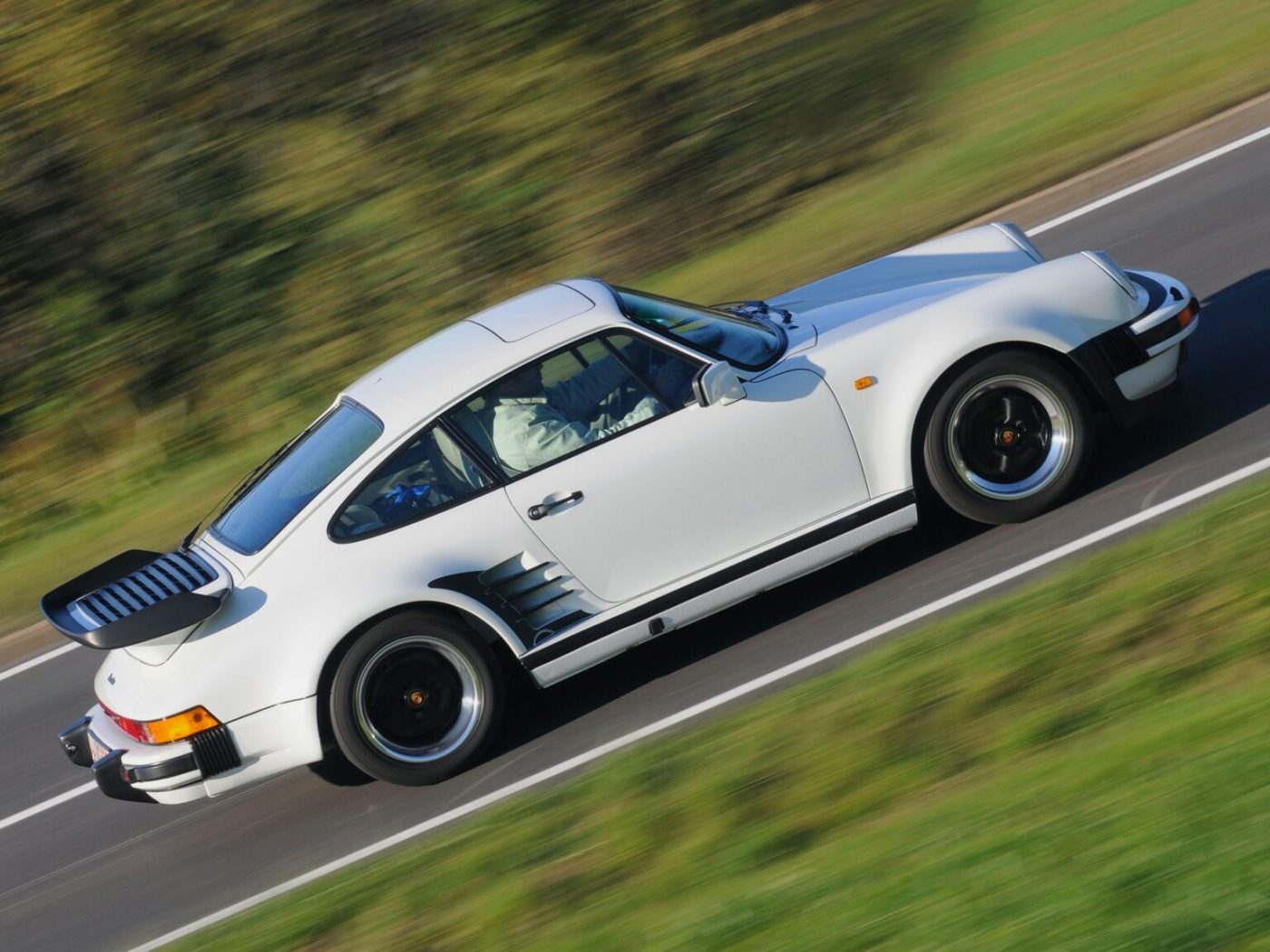
With Groups 4 and 5 in mind, Porsche created their second 911-based homologation special: the turbocharged 930. The development of Porsche's first turbocharged version of the Model 911 began in 1972 and went on sale in Europe for the model year 1975 and marketed simply as the "911 Turbo". The first exports didn't hit the shores of the US until 1976 and were initially badged as "Turbo Carrera" for a short period of time. Soon the designation was changed to Type 930. The original plan for the 911 Turbo was to meet the homologation requirements of 400 units (enough for homologation rules), but in the end the Turbo became a cultural phenomenon, a performance king and huge commercial success.
Porsche adapted the turbo-technology that was initially designed for the 1973 CAN-AM racer Model 917/30 (which churned out a seering 1100 bhp+) to the 3.0L flat six from the 1974 Model Carrera RS 3.0 (which was the base model for the Carrera RSR 3.0 which dominated 6 out of the 8 rounds of the 1974 European GT Championship) creating the 256hp monster that was then internally dubbed the Type 930. In order to handle the higher power output, the Type 930 was given a suspension revision, larger brakes, larger wheels, wider tires and flared fenders to accommodate the extra power. A large rear spoiler was added, known familiarly as a "Whale Tail" or a "Tea Tray", to help create downforce at the rear and push more air through the engine. Lastly, it got a stronger 4-speed gearbox.
As impressive as the stats and performance graphs were for the Type 930, the car proved dangerous and even deadly in the hands of inexperienced drivers. The rear-engine placement was advantageous for traction; however, the severe turbo-lag would create sudden bursts of power during cornering that would break the car loose and cause it to spin out of control. Less experienced drivers would react by quickly releasing the throttle which only amplified the situation - the result was more often than not disastrous. It became known as the widow-maker.
The Type 930 was upgraded its life, most obviously in 1978 when the engine size was increased to 3.3 liters and an intercooler was added which bumped up engine output to 300 hp. The brakes were also upgraded again, and the spoiler was re-designed and raised slightly to accommodate the addition of the intercooler. There were also several special edition Turbo models you could buy, like the "Flachbau" or "slantnose" editions, giving you more power and a different, Porsche 935 look. The last major revision for the Type 930 came in 1989, which was ironically the last year of production for the model. It was finally equipped with a G50 transmission - the 5-speed manual that many feel should have been incorporated into the initial design back in 1975. The Type 930 was officially replaced by the Type 964 in 1990, however it will always have the honor of being the model that began Porsche's Turbocharged legacy.
We dig into some of the data surrounding the second generation Porsche 911, including production numbers, specifications, chassis numbers, sales brochures, equipment codes, maintenance schedules, common problems, colors and much more.
The second-generation Porsche 911 (1974–1989) — the impact bumper era — was not the work of a single designer, but rather an evolution led by Porsche’s in-house design and engineering teams, building upon the timeless foundation created by Ferdinand Alexander “Butzi” Porsche. Butzi had designed the original 911 in the early 1960s, and although he left the company in 1972 to found Porsche Design, his influence remained deeply embedded in the car’s DNA.
When new U.S. safety regulations required cars to withstand 5 mph crash impacts without body damage, Porsche’s design department, under Anatole “Tony” Lapine, engineered a way to integrate modern safety features without sacrificing the 911’s identity. The result was the impact bumper design — energy-absorbing aluminum bumpers connected to the chassis via telescoping shocks and wrapped in flexible rubber bellows. This clever solution retained the 911’s elegant proportions while meeting global safety standards. Lapine and his team also refined the car’s aerodynamics, cooling, and structure, blending engineering and aesthetics seamlessly.
In short, the impact-bumper 911 was a collaborative Porsche evolution, born from Butzi Porsche’s original shape and refined under Tony Lapine’s design direction.
The second generation of the Porsche 911 — commonly known as the Impact Bumper Era — spans from 1974 to 1989. Introduced to comply with new U.S. crash safety regulations, these 911s featured distinctive impact-absorbing bumpers with black rubber bellows while retaining the classic 911 silhouette. Over its 15-year production run, this generation evolved through several major phases: the 2.7-liter cars (1974–1977), the 3.0-liter 911 SC models (1978–1983), and finally the 3.2-liter Carrera models (1984–1989). The era also included the introduction of the 911 Turbo (930) in 1975, which became one of the most iconic sports cars of its time. The 1974–1989 impact-bumper cars bridged the gap between the original, minimalist 911s of the 1960s and the more modern, aerodynamic 964 generation that followed in 1989.
The F-body (1969) Porsche 911 represents the final iteration of the classic, pre-impact-bumper era, characterized by its slim, chrome-accented design, lightweight body, and high-revving 2.0-liter engine, while the impact-bumper generation (1974–1989) introduced a fundamentally new approach to meet U.S. crash regulations and evolving customer expectations.
The impact-bumper cars featured energy-absorbing bumpers integrated into a stronger, heavier body with revised crash structures, larger engines (2.7 to 3.2 liters), improved drivability, and greater refinement. These safety and engineering changes, along with the shift from a pure sports car to a more usable and durable grand tourer, mark a clear technological and philosophical break between the delicate, minimalist feel of the classic F-body 911s and the more modern, everyday-capable impact-bumper generation that defined the 1970s and 1980s.
Cars prior to the impact-bumper as considered the first generation Porsche 911 and sometimes referred to as the F-Body 911 generation, while impact-bumper cars are considered G-Body cars or second generation Porsche 911s.
The second-generation 911 was remarkably innovative not because it reinvented the 911, but because it perfected it for the modern world. When new U.S. safety and emissions regulations in the early 1970s forced many sports car makers to compromise on performance or abandon certain markets entirely, Porsche engineered a solution that preserved both safety and soul. The introduction of impact-absorbing bumpers allowed the 911 to meet strict crash standards without losing its iconic silhouette — a brilliant piece of engineering that blended form and function seamlessly. Porsche also galvanized the entire body (starting in 1976), making the 911 one of the first production cars with near-complete rust protection — a massive leap in durability.
Under the skin, the era saw constant technical evolution. The 911 gained larger, more powerful engines (from 2.7 to 3.2 liters), Bosch fuel injection, and Motronic electronic engine management, all improving performance, reliability, and efficiency. The introduction of the 911 Turbo (930) in 1975 was revolutionary: it brought turbocharging from the racetrack to the street, creating one of the world’s first true “supercars.” By the late 1980s, the Carrera 3.2 refined the formula with modern drivability, a stronger G50 gearbox, and the perfect balance between analog engagement and usability. What made this generation special was its resilience and adaptability — Porsche managed to evolve the 911 through economic crises, emissions laws, and changing tastes, all while keeping it instantly recognizable and thrilling to drive. It proved that the 911 wasn’t just a design — it was a philosophy that could endure and evolve, a quality that continues to define Porsche to this day.
The second-generation Porsche 911 (1974–1989) was impressively fast for its era and evolved dramatically over its long 15-year production run. Early 2.7-liter cars (1974–1977) produced between 150–210 hp, depending on the variant, with the top-spec Carrera 2.7 MFI (mechanical fuel injection) capable of 0–60 mph in about 6.0 seconds and a top speed around 145 mph (233 km/h) — numbers on par with contemporary Ferraris. The game changed in 1975 with the debut of the 911 Turbo (930), initially with a 3.0-liter turbocharged engine producing 260 hp, later upgraded to a 3.3-liter with 300 hp in 1978. The Turbo could hit 0–60 mph in just over 5 seconds and exceed 160 mph (257 km/h), making it one of the fastest production cars in the world.
By the 1980s, the naturally aspirated 911s had matured into the 3.0-liter SC (180–204 hp) and later the 3.2 Carrera (207–231 hp), both offering refined power delivery and consistent high-speed capability. The Carrera 3.2 could accelerate from 0–60 mph in 5.5–6.0 seconds and reach a top speed of around 150 mph (241 km/h). Beyond raw acceleration, the second-generation 911’s real strength was its real-world performance — its light weight, exceptional balance, and rear-engine traction made it devastatingly quick on twisting roads and racetracks. The 911 Turbo’s combination of explosive power and handling defined the “supercar” benchmark of its time, while the Carrera 3.2 proved that Porsche could deliver everyday usability with race-bred performance, a hallmark that continues to define the 911 today.
When it comes to the second-generation Porsche 911 (1974–1989) — the impact-bumper era — the “best” model depends on what you value most: performance, collectibility, or everyday usability. Many enthusiasts and experts point to the late 1980s Carrera 3.2, particularly the 1987 model year, as the sweet spot. The 3.2 Carrera featured the robust 3.2-liter flat-six with Bosch Motronic fuel injection, delivering excellent reliability and usable performance with 231 hp (Europe) or 217 hp (U.S.). The 1987 model introduced the G50 5-speed gearbox, which offered smoother, more precise shifting than the older 915 transmission, making it the most refined and user-friendly of the impact-bumper cars. These late Carreras combine the classic 911 feel — air-cooled sound, analog driving experience, and timeless design — with improved comfort, corrosion protection, and mechanical durability, making them ideal for both collectors and regular drivers.
For those seeking more raw performance and collector appeal, the 911 Turbo (930) models stand out. The early 3.0-liter Turbos (1975–1977) and later 3.3-liter versions (1978 onward) delivered explosive power and became icons of the supercar era. They’re thrilling but demand respect — with heavy clutches, significant turbo lag, and higher maintenance costs. On the other end of the spectrum, early impact-bumper cars from 1974–1977 with the 2.7-liter engines are generally the ones to approach with more caution. While they introduced the new bumper design and offered light, agile handling, the 2.7 engines were prone to overheating and mechanical issues if not properly maintained or updated with later improvements like case-savers and upgraded tensioners.
In short, if you want a blend of classic style, modern usability, and long-term reliability, the 1987–1989 Carrera 3.2 with the G50 gearbox is widely considered the best of the era. If you’re chasing performance and pedigree, a well-kept 930 Turbo is a thrilling but more demanding choice. Conversely, early mid-’70s 911s can still be rewarding, but they require careful vetting and expert maintenance — proof that not all impact-bumper cars are created equal.y.
Prices for second-generation Porsche 911s (1974–1989) — the G-Series, or “impact-bumper” models — vary widely depending on model, year, and condition. On average, these cars trade for around $80,000–$100,000, though entry-level examples and project cars can dip below that range, while top-spec models and collector-grade examples easily reach six figures. A well-maintained 3.2 Carrera from the mid-to-late 1980s typically commands $70,000–$90,000, while exceptional, low-mileage, or highly original cars can exceed $100,000. Early 911 SCs (1978–1983) are generally more affordable, starting in the $50,000–$70,000 range, offering a great balance between reliability and classic feel.
At the high end, 911 Turbos (930s) are in a different league altogether — early 3.0-liter cars (1975–1977) and later 3.3-liter models (1978 onward) can range from $120,000 to well over $250,000, depending on rarity, mileage, and provenance. Special variants like the 1989 Speedster, Turbo-Look Cabriolet, and Clubsport models are prized by collectors and regularly exceed $200,000–$300,000 at auction.
Ultimately, value comes down to condition, originality, and documentation. Cars with matching numbers, full service history, and rust-free bodies will always command a premium. The most desirable examples are the later 1987–1989 3.2 Carreras with the G50 5-speed gearbox, as they combine modern usability with classic character. Meanwhile, cheaper or heavily modified 911s can look tempting, but buyers should budget carefully — restoration or deferred maintenance can quickly erase any savings.
Yes — the second-generation Porsche 911 (1974–1989) saw some of the most significant updates in the model’s history, even though its classic shape stayed largely the same. The biggest change came right at the start of the generation with the introduction of impact-absorbing bumpers in 1974. These were a direct response to new U.S. crash safety regulations, and Porsche ingeniously integrated them without ruining the 911’s proportions. This not only preserved the 911’s identity but also set a new design standard for safety and elegance in sports cars. Around the same time, the 911’s body gained improved rust protection, culminating in fully galvanized steel by 1976 — a first for Porsche and a huge leap in longevity, virtually eliminating the corrosion problems that plagued earlier models.
Mechanically, the 911 continued to evolve throughout this 15-year run. The engine grew from 2.7 liters (1974–77) to 3.0 liters in the 911 SC (1978–83) and then to 3.2 liters in the Carrera (1984–89), each step bringing more power, torque, and reliability. The introduction of Bosch CIS fuel injection, and later Motronic electronic engine management, improved efficiency and drivability. Another major milestone was the 1975 debut of the 911 Turbo (930) — Porsche’s first turbocharged production car — which redefined performance expectations with supercar-level power and unmistakable looks. Finally, the 1987 Carrera brought the refined G50 5-speed gearbox, smoother and more durable than the older 915 transmission, marking the mechanical peak of the air-cooled impact-bumper era. Together, these updates made the second-generation 911 not only faster and safer but also far more usable — turning it into a sports car that could truly be driven and enjoyed every day.
Join Our Porsche Community
Sign up for our weekly Porsche newsletter. The latest Porsche news, rumors, reviews and more delivered to your inbox. Cool Porsche stuff perfect for the flat-six obsessed.